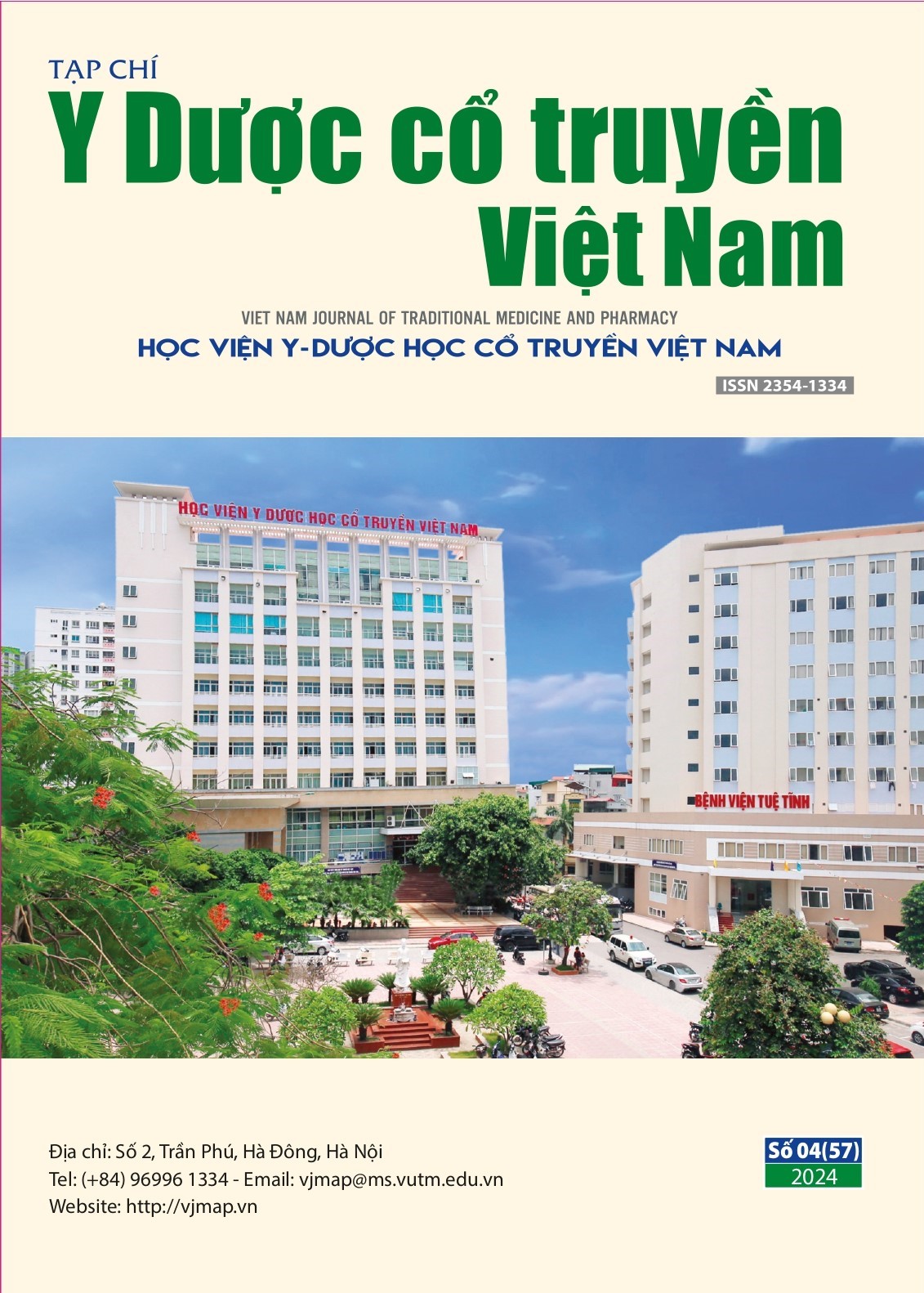Botanical characteristics and chemical composition of celastrus hindsii benth. collected in Hoa Binh province and differentiate with ehretia asperula zoll et. mor
Main Article Content
Abstract
Objective: To describe in details plant morphological characteristics of Celastrus hindsii Benth., compare morphological characteristics and chemical composition with Ehretia asperula Zoll et. Mor.
Subjects and methods: Morphological study using analytical description method. Qualitative identification of chemical composition by characteristic reactions. Fingerprint chromatography of these two species using thin layer chromatography (TLC) and high performance liquid chromatography (HPLC) methods.
Results: The morphological characteristics of C. hindsii have been described in detailed and compared with the species E. asperula. Stem and leaves C. hindsii contain fatty acid, sterols, flavonoids, saponins, cardiac glycosides, reducing sugars, tannins, amino acids, organic acids and polysaccharides. Plant E. asperula contains fatty acids, sterols, flavonoids, saponins, coumarins, reducing sugars, tannins, amino acids, and polysaccharides. The chemical composition of C. hindsii and E. asperula are differentiated using TLC and HPLC methods.
Conclusions: The plant characteristics of C. hindsii are described, the C. hindsii differs from E. asperula in terms of plant morphological and chemical composition by qualitative identification.
Article Details
Keywords
Celastrus hindsii, Ehretia asperula, plant morphology, chemical composition
References
2. Su X. H., Zhang M. L., Zhan W. H., Huo C. H., Shi Q. W., Gu Y. C., Kiyota, H. Chemical and pharmacological studies of the plants from genus Celastrus. Chemistry & Biodiversity, 2009, 6(2), pp.146-161.
3. Dhumal S. R., Shete R. V., Adak V. S., Murthy K. A review on Celastrus paniculatus wild (Jyotishmati): It’s species, geographical sources, phytoconstituents, and therapeutic uses and pharmacological actions. International Journal of Herbal Medicine, 2021, 9(4), pp.112-118.
4. Duc C. K. T., Linh T. C., Thanh N. Q. C., Nhien P. Q., Danh L. T., Tuan N. T. Isolation and Evaluation of the Antioxidant Capacity of Compounds from Ehretia asperula Zoll. & Moritzi. Indonesian Journal of Chemistry, 2024. https://doi.org/10.22146/ijc.94762.
5. Đái Thị Xuân Trang, Nguyễn Thúy Tố Minh, Nguyễn Hoàng Duy, Trần Chí Linh, Phan Ngọc Thùy Ngân. Tối ưu hóa quy trình ly trích cao chiết lá xạ đen (Celastrus hindsii) giàu polyphenol, flavonoid có hoạt tính kháng oxy hóa và kháng đái tháo đường in vitro. Tạp chí Khoa học Đại học Cần Thơ, 2022, 58, tr.48-58.
6. Nguyễn Linh Tuyền, Bùi Hoàng Minh, Bùi Nguyễn Biên Thùy, Nguyễn Hà Mỹ Vân. Đặc điểm thực vật học và tác dụng gây độc tế bào của cây Xạ đen (Ehretia asperula Zoll. & Mor. Boraginaceae). Tạp chí Khoa học Công nghệ (Đại học Nguyễn Tất Thành), 2022, 17, tr.20-24
7. Wu, Z. Y., P. H. Raven & D. Y. Hong, eds. Flora of China, Science Press & St. Louis: Missouri Botanical Garden Press, 2008, Vol.11, pp.439-473
8. Bộ Y Tế. Dược điển Việt Nam V, Nhà Xuất bản Y học Hà Nội, 2018.

